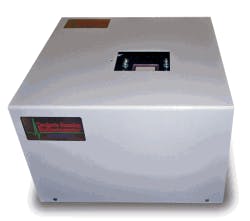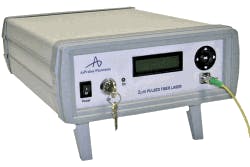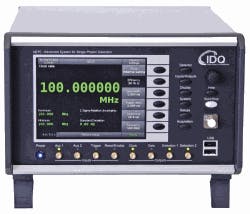CLEO/Laser Focus World INNOVATION AWARDS: Terahertz scanning reflectometer from Applied Research & Photonics takes top award
The 2011 CLEO/Laser Focus World Innovation Awards program is designed to honor groundbreaking products in the field of photonics and laser science. The awards are sponsored by Laser Focus World magazine and the Optical Society’s (OSA; Washington, DC) Conference on Lasers and Electro Optics (CLEO) program.
Innovation Awards entrants are challenged to show how their application, service, or product (launched between September 2009 and March 2011) meets criteria such as significant impact to the photonics industry, excellent functionality and long life expectancy, secure patent position, and an exceptional level of innovation.
The awards were presented at the CLEO 2011 Plenary Session in Baltimore, MD. Information on the Innovation Awards can be found online at http://bit.ly/kJfZPa.
INNOVATION AWARD WINNER
Applied Research & Photonics (Harrisburg, PA)
The 2011 CLEO/Laser Focus World Innovation Award winner was Applied Research & Photonics for its highly sensitive, low-power terahertz scanning reflectometer for direct measurement of diffusion gradients and permeation kinetics of materials including biological tissues, in real time. Before launch of its terahertz instrument, Applied Research & Photonics says there was no single instrument that provided measurement of both the concentration gradient of a permeating ingredient across the thickness of a substrate (such as skin tissue) and the rate (kinetics) of the permeation. The noninvasive reflectometer provides both measurements in real time.
Using the difference frequency method, a continuous-wave terahertz signal is generated and directed to a sample at a 90º angle by an off-axis parabolic reflector. A motion controller scans the beam through the sample thickness, and a detection system records the reflected signal both with and without the permeating ingredient in real time while the permeating ingredient is diffusing. Computations using the reflection data yield both concentration of the permeation ingredient and its diffusion rate over time.
In addition to measuring diffusion coefficients for life-science applications, the reflectometer can also be applied to the optics and semiconductor industries—without the need for fluorescence or radioisotope labeling. For more information, go to http://arphotonics.net.
HONORABLE MENTIONS
AdValue Photonics (Tucson, AZ)
The first commercially available Q-switched fiber laser operating at 2 µm from AdValue Photonics enables new applications in light detection and ranging (lidar), sensing, and materials processing. Operating at an eye-safe wavelength, the fiber laser can also be used to generate 3–5 µm mid-infrared (mid-IR) radiation for environmental monitoring and IR countermeasures applications, or as a seed laser for high-power amplification.
Its adjustable pulse repetition rate from 1 Hz to 30 kHz and 20–50 ns pulsewidth delivers 100 mW average power at 20 kHz, opening up new application possibilities that require a pulsed, high-peak-power source. For more information, go to www.advaluephotonics.com.
ID Quantique (Geneva, Switzerland)
An advanced system for single-photon detection from ID Quantique can be used for cryptography, eye-safe lidar, and single-photon source characterization applications. Its innovation lies in the system’s ability to operate at high speeds up to 100 MHz in free-running mode, without requiring cryogenic cooling.
About the Author

Gail Overton
Senior Editor (2004-2020)
Gail has more than 30 years of engineering, marketing, product management, and editorial experience in the photonics and optical communications industry. Before joining the staff at Laser Focus World in 2004, she held many product management and product marketing roles in the fiber-optics industry, most notably at Hughes (El Segundo, CA), GTE Labs (Waltham, MA), Corning (Corning, NY), Photon Kinetics (Beaverton, OR), and Newport Corporation (Irvine, CA). During her marketing career, Gail published articles in WDM Solutions and Sensors magazine and traveled internationally to conduct product and sales training. Gail received her BS degree in physics, with an emphasis in optics, from San Diego State University in San Diego, CA in May 1986.



